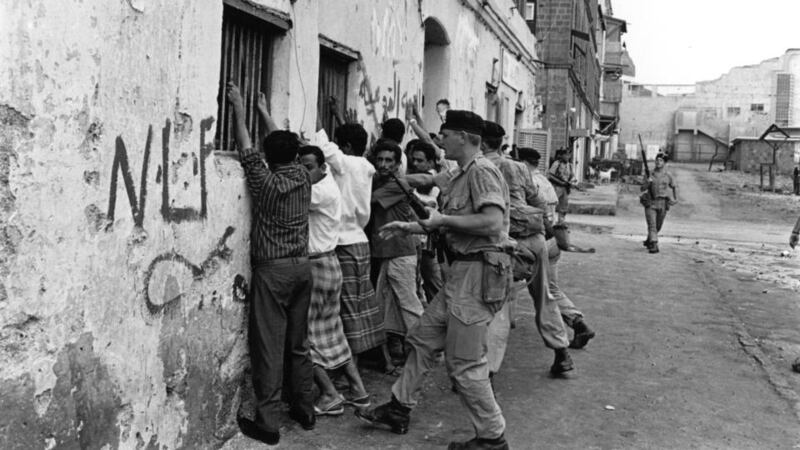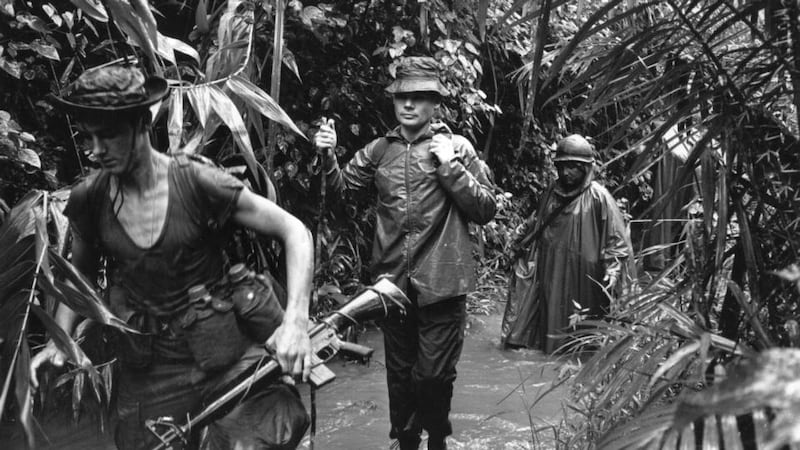
The book is misnamed, for it is not really about Lieut Col Colin Mitchell, who led British operations against Arab nationalist insurgents in Aden in 1967, and whom the media christened Mad Mitch. It is a closely followed chronology of the last few years of Aden as a colony and of British military missions in southern Arabia at the time.
The research effort to create this is stupendous. Aaron Edwards has accessed a vast volume of material and an extensive range of direct informants, but he has had some difficulty in reducing the clutter of detail, much of which might have been weeded out to make a more readable book.
I would have liked a broader-ranging introduction, setting the scene for a reader new to the subject; readers impressed by the intimacy of military detail here are likely to know much of that already.


One gets the impression at times that Edwards feels an obligation to those who helped him and repays their candour by giving them more space than a ruthless editor would have permitted.
The challenge he faced was to marry the close personal stories with the account of broader geopolitical change, and sometimes the fit doesn’t work, particularly in the earlier chapters.
A focus on a smaller number of people, or even on the one who provides the title, might have been enough to carry the broader story of Aden’s last days under British rule while giving Edwards less work to do.
Some of the best parts of the book are the descriptions of gun battles, culled from his interviews with those who took part in them. Here his evident empathy with soldiers enriches his storytelling; elsewhere it seems to compromise his analysis.
The story, through Mad Mitch’s eyes, is of a crisis that was deteriorating because no one in the British establishment had the resolve to cope with it. Aden’s army of occupation was devoting too much of its energy to protecting the domestic routines of army families and preserving for them an illusion of normality and comfort. One brigadier had given up apparently for health reasons; another had too much else on his plate.
The Labour government at home just wanted things wrapped up. This created the conditions in which an ambitious and ruthless lieutenant colonel could determine strategy and make a name for himself. Mitchell, who is “Colin” throughout the book, as if to express the author’s affection for him, believed in “training hard and fighting easy”. He was a stickler for discipline and insisted on his men being well turned out. And he wanted to avenge the killings of British soldiers in a mutiny.
Edwards has produced a book that will be a treasure to military historians and a thrill for those who like their action tales uncompromised by liberal doubt. It will excite old soldiers with its respect for their culture and their ways, those who may feel able to stand with the funeral bugler, “tinged with sadness”, whose “aim was to produce an unblemished rendering”.
This is a writer who has no doubts about the decency and principles of the British army, and this book will be best enjoyed by those who share that attitude. There are light asides about military operations of a kind that we were spared, like “routine strafing operations”.
From a Northern Irish perspective the most interesting part is the stories about senior army officers who, a little later, would have an effect on the streets of Belfast and Derry.
Some will be amused by an account of how one of the most prominent soldiers of the early 1970s was nearly lost to us. Anthony Farrar-Hockley, who adopted a scolding attitude towards the Northern Ireland population and once named senior members of the IRA on television, nearly lost his life fighting Egyptian-backed tribesmen in the Radfan. Unable to get a radio signal in the heat of battle he took a helicopter up and was shot out of the sky, surviving by a miracle. But TFH, as we are told he was known, is spared the ridicule of the author.
Another soldier who had a major role here was Hew Pike, later the army’s general officer commanding in Northern Ireland. A civil enough man, he occasionally had journalists to lunch with him at Thiepval Barracks, in Lisburn. His account of a first armed engagement with the tribesmen in Aden reads like a sports report. It was, he wrote, “one of the finest sort of fire and manoeuvre advances to contact by night that I’ve ever experienced or witnessed anyone else doing”.
Fascinating account
This is a fascinating book on several levels. As a piece of thoroughly researched history, drawing mostly from army sources, it provides a valuable account of the political and military thinking during the last days of a colony.
It also provides an insight into how soldiers see themselves and each other, conveying an impression that they are removed from the rest of us and have a tendency to congratulate themselves a bit too highly.
There are times, reading this, when the strongest literary influence seems to be the Hotspur comic. Old soldiers are legends. It is not they who have "protuberant, hypnotic eyes"; that's the guys on the other side.
Edwards is perhaps so immersed in military culture, as a lecturer at Royal Military Academy Sandhurst, that he doesn’t recognise this tilt towards jingoism. Perhaps it is a little tongue in cheek, or perhaps he is deferring to those he expects to be his most likely readers: soldiers.












